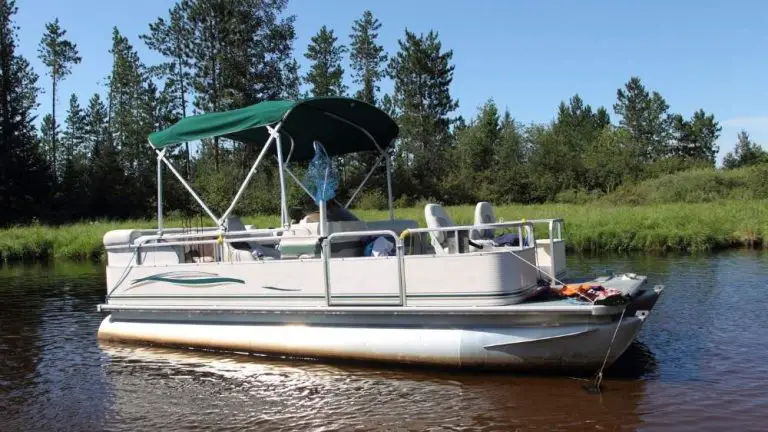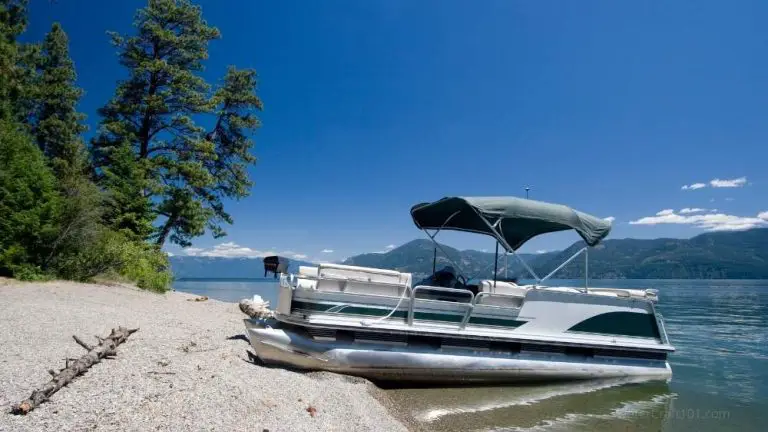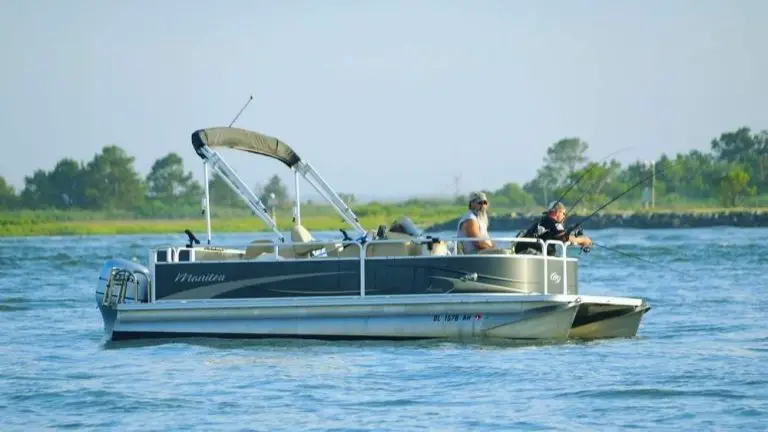Should Pontoons Have Water in Them? (How to Know & Fix)
A pontoon boat (often referred to simply as a “pontoon”) is a flat water vessel that uses cylindrical tubes (pontoons) on each side to keep it afloat. Manufacturers design pontoon boats for leisure use, not rough, heavy-duty excursions. If the vessel experiences a collision, the tubes may become damaged, allowing water to enter.
Pontoon boats shouldn’t have water in them. The tubes contain air or foam for buoyancy — if water enters, it weighs down the logs. This causes tilting, eventually leading to sinking or engine damage. Signs of water in pontoon logs include a boat tilting or the sound of sloshing liquid in the tubes.
This article addresses why pontoons may have water in the logs and what happens when water fills the pontoon. Additionally, we’ll cover how to get water out of the pontoon tubes and repair any leaks. Read on to learn more.
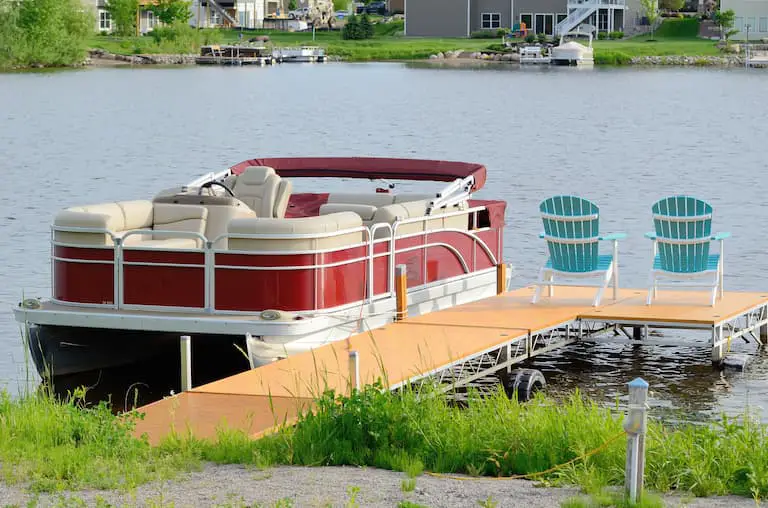
Why Does My Pontoon Have Water in It?
A pontoon boat with water in the logs is a sign of a leak. Water enters the pontoon log through a crack, hole, or damaged seal somewhere on the pontoon tube. While pontoon boats are sturdy, the logs aren’t significantly thick and may become damaged by even minor collisions.
Pontoon boats can last for up to 50 years with regular maintenance. However, water in pontoons happens more often on older boats using riveted aluminum logs. These are susceptible to corrosion over time.
These boats are shallow-draft vessels. The typical 18 to 20 foot (5.48 to 6.09 meters) pontoon log sits between 16 to 24 inches (40.64 to 60.96 centimeters) in the water. The logs may sit as low as 10 inches (25.4 centimeters) with the motor at full speed.
Each side should sit level with an even load, except when running with a full fuel tank — in that case, the side where the gas tank sits may sit slightly lower than the other side (this is completely normal).
If there’s a significant amount of tilting, the pontoon logs contain water. This is quite serious and can cause the vessel to sink.
Fortunately, water in pontoons isn’t a common occurrence with newer pontoon boats, thanks to new materials, manufacturing techniques, and designs.
What Happens if My Pontoon Has Water in It?
A pontoon boat with water on the deck isn’t an issue — it’s typically due to splashing water — unless the boat is tilting, causing water to rise up to the surface. Water in a pontoon log, however, can be a big potential problem
If a pontoon log has water in it, the boat cannot float levelly — it may tip or lean to one side. The vessel no longer reaches normal speeds, and it becomes difficult to steer since one side sits lower than the other. Eventually, the tube completely fills with water causing the vessel to sink.
As such, it’s important to get the pontoon out of the water and remedy the problem immediately.
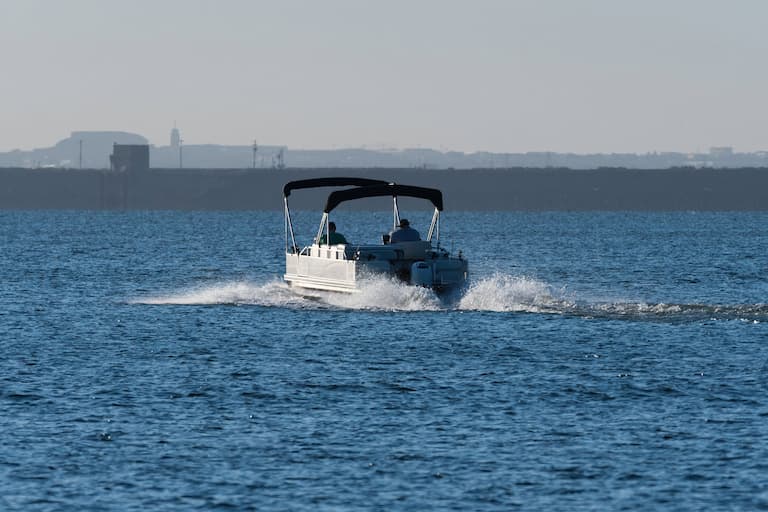
How To Get Water Out of a Pontoon Log
Decades ago, manufacturers used aluminum and steel to design pontoon logs. These aluminum or steel tubes used rivets to hold them together, and the air inside provided buoyancy. Today, manufacturers employ various materials to create pontoon logs, including PVC or other plastics. Some even use encased foam instead of air for maximum buoyancy.
No matter how manufacturers design pontoons, if either of the tubes becomes damaged, they fill with water. The only way to remedy the problem is by removing the vessel from the water, draining the liquid, and repairing the leak.
Draining a Pontoon Log
You don’t “pump” water out of a pontoon, as these vessels don’t come equipped with bilge pumps. This is because water doesn’t accumulate in the hull or deck — it enters through the pontoon logs.
Today, manufacturers utilize different materials and techniques to make pontoon logs safer, preventing leaks. As such, drains aren’t included in most modern pontoons. Because of this, you’ll have to drill a hole to drain the logs. We’ll discuss this in more detail in this section.
However, older pontoon boats made with aluminum logs may contain drain plugs. This is because the rivets that hold the material together were susceptible to corrosion over time (usually due to saltwater exposure). We’ll also address how to use the drain plugs and fix them if they’re corroded.
How To Drain Pontoon Logs Without Drain Plugs
- Remove the pontoon from the water. You can’t safely (nor effectively) drain a pontoon log on open water. Not only do water-filled logs cause the pontoon to tilt and eventually sink, but drilling a hole in a pontoon log on water only allows more water to enter. Therefore, you must remove the pontoon from the water immediately.
- Find the leak. Use an air pump to pump 3 to 4 pounds of air pressure (21 to 28 kPa) into the logs. Listen closely for a leak. If you’re unable to hear air escaping, mix a solution of mild dish detergent and water. Rub it onto the pontoon logs with a brush. Pump air into the logs again, and look for bubbles — this is the location of the leak.
- Tilt the boat. On your trailer, tilt the boat upwards, allowing any water in the logs to drain to one side.
- Drill a small hole into the pontoon log. Keep the hole close to the ground to allow gravity to pull the water down. Allow any water in the pontoon to drain from the hole.
- Seal the leak and the drainage hole. Once all of the water drains from the pontoon log, seal the leak and the drainage hole you created. With aluminum and steel, you can weld over the holes. Other materials require different patching methods, such as a water-resistant silicone sealant. You may also consider filling the logs with foam, which we’ll discuss a little later in this section.
Draining Pontoon Logs With Drain Plugs
- Remove the boat from the water. Don’t pull drain plugs while you’re on the water, as this only allows more water into the logs.
- Tilt the boat on the trailer. Keep the plugs closest to the ground so that gravity pulls the water to the drains.
- Pull the plugs. Allow all of the accumulated water to drain.
- Replace the plugs. Secure the plugs back onto the pontoon logs. Tilt the boat back down so that it’s level with the ground.
- Find the leak. Use the air pump and dish detergent method listed in step two of the section “How To Drain Pontoon Logs Without Drain Plugs.”
- Seal the leak. Older boats typically use aluminum logs. Repair these by welding over the leak.
How To Fix Corroded Drain Plugs on an Old Pontoon
Sometimes old pontoon drain plugs become corroded, making them difficult to remove. This is typically due to minerals left behind after saltwater excursions.
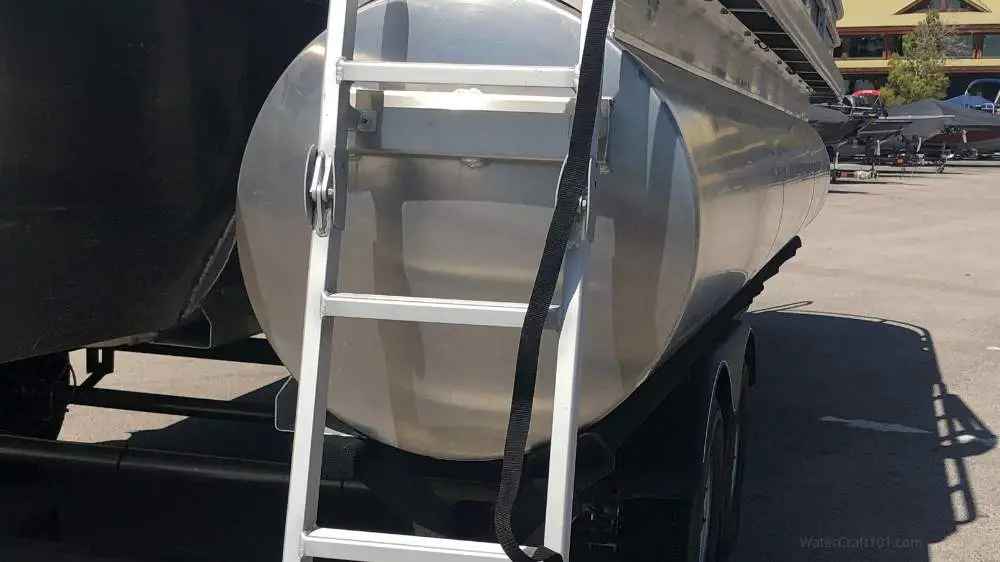
If you have an older pontoon boat with corroded drain plugs, replace them before taking the pontoon back on the water.
- Find replacement drain plugs. Depending on your pontoon boat’s make, model, and year, you may find replacements on second-hand websites. If all else fails, reach out to the boat manufacturer and see if they have any spare parts to fit your boat.
- Patch any leaks. Before replacing the drain plugs, ensure that there are no leaks in the logs. Fix them using the steps above before moving on.
- Drill through the center of the drain plug. Use a small metal drill bit to drill directly through the center of the drain cap.
- Repeat this method with a larger drill bit. Put the bigger drill bit into the hole and drill again, making the hole bigger. If needed, repeat again with an even larger drill bit.
- Drill until only the edge of the drain plug remains. Don’t completely drill away the entire plug. You’ll need the edge to pull out the plug. Not to mention, you don’t want to drill through the aluminum pontoon accidentally.
- Use a hacksaw to remove the drain plug. Once only the edge of the plug remains, gently and carefully saw around the edges to slice it in half. Peel out the pieces slowly.
- Clean and/or rethread the threads. Use a ½-inch (1.27 centimeter) copper fitting brush to clean the threads. If you’re dealing with stripped threads, utilize a ½-inch (1.27 centimeter) pipe tap to rethread the pipe.
- Replace the drain plug. Ensure that the replacement you have fits properly. Check that the plug is secure before taking the pontoon back onto the water.
Adding Foam To Pontoon Logs
Today, many pontoon logs utilize foam encased in plastic or PVC. The foam fills the entire tube, reducing the likelihood of water entering the logs.
Some pontoon owners choose to “upgrade” their pontoons by filling their logs with foam to prevent further leaks. Closed-cell floatation foam is the most popular choice.
In the canister, the foam remains in liquid form. Once it exits the can, it expands. This allows the foam to fill the entire pontoon logs completely, thus, removing any space for water to enter. Another benefit of filling pontoon logs with foam is that it aids in buoyancy.
Conclusion
Pontoons shouldn’t have water in the logs. Water in a pontoon log compromises buoyancy, leading to tilting, which significantly compromises steering. This prevents navigation to shore, making the situation even more dangerous. Additionally, the vessel may be inoperable if water reaches the engine compartment.
Older pontoon boats allow for easy drainage. Owners can then locate and repair a leak. Sometimes, however, these drain plugs become corroded and need replacing.
On the other hand, newer pontoon boats don’t contain drain plugs. This requires drilling a hole, draining the water, locating the leak, and patching the leak and drain hole.




